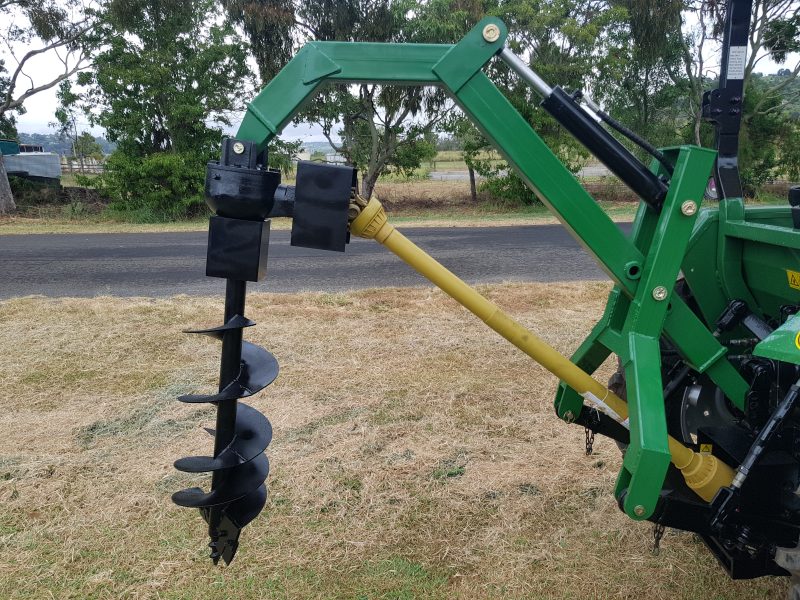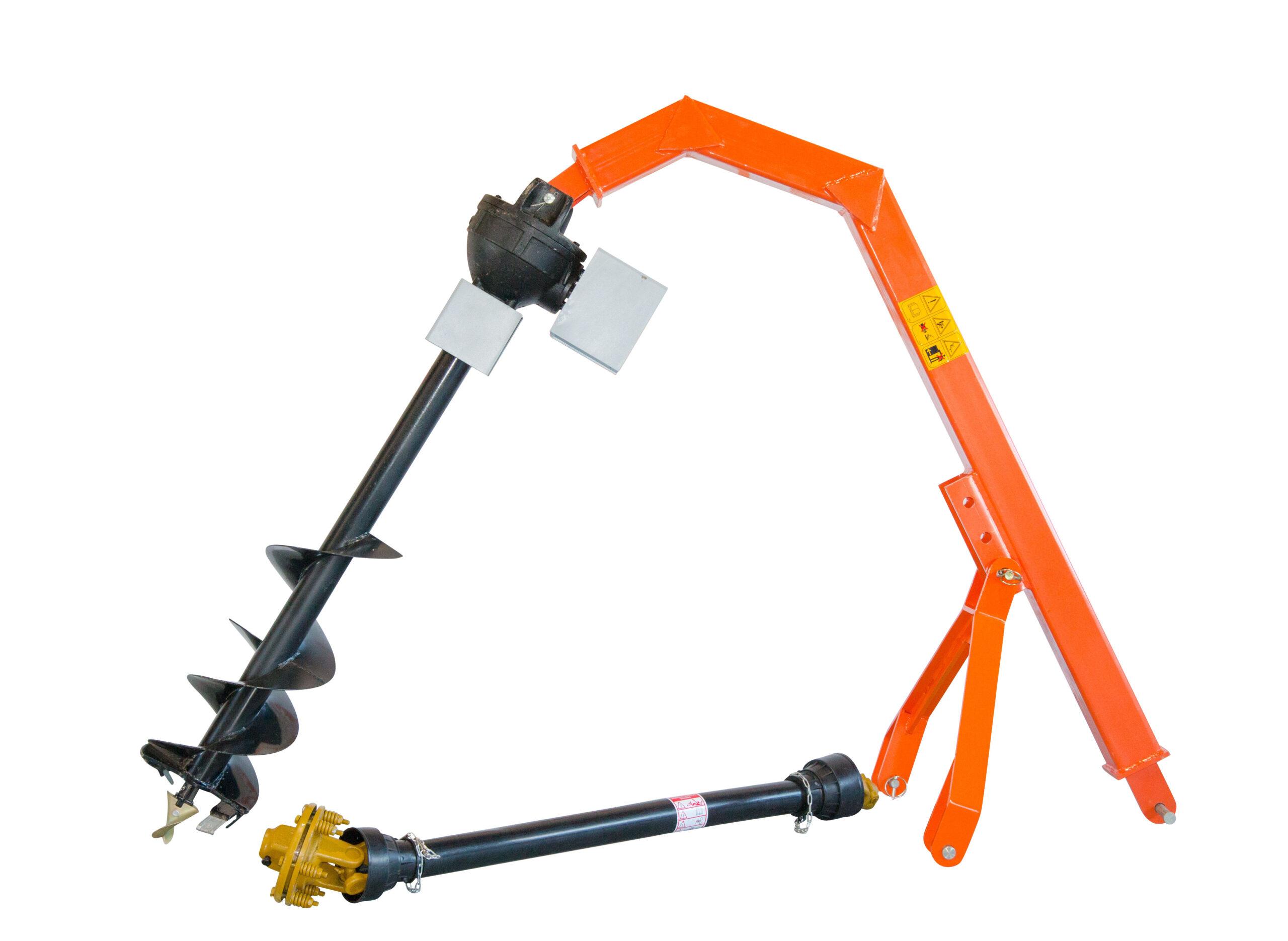Product Description
Product Description
| Engine type: | Air cooled,two stroke ,single cylinder |
| Engine model: | 1E48F |
| Displacement: | 62CC |
| Rated power output: | 2.4KW/3.2HP |
| Idling speed: | 3000±200rpm |
| Fuel tank capacity | 1.2L |
| Bit diameter: | 50/80/100/150/200/250/300mm |
| Certiffication: | CE, GS, EMC,EURO V |
The 62cc Gasoline Post Hole Digger Soil CHINAMFG Machine Earth Auger with Ground Drill (GD600B), a powerful and efficient tool designed for CHINAMFG holes in the ground with ease. This earth auger is perfect for various applications such as fencing, tree planting, and landscaping.
Equipped with a 62cc gasoline engine, this post hole digger provides reliable performance and high power output. The ground drill attachment allows for quick and precise digging, saving you time and effort on your projects. The ergonomic design ensures comfortable handling, reducing operator fatigue during extended use.
Whether you are a professional landscaper, contractor, or DIY enthusiast, the GD600B Earth Auger is a must-have tool for your arsenal. Invest in this top-quality machine and experience efficient soil CHINAMFG like never before.
Our Advantages
CORDLESS FREEDOM – Annoying power cords are a thing of the past! Whether a fence post hole requires drilling or a hole is needed in the garden this Fence Post Auger from Einhell is here to make earth boring easy!
performance and a longer service
ROBUST DESIGN – The high-quality, durable and robust gearbox housing of this Hole Borer is built for demanding work whilst the steel frame integrated in the post hole digger’s double handle ensures maximum stability.
Our intelligent Battery Electronics and high-performance Li-Ion Cells makes our Rechargeable Battery System 1 of the safest in the industry and ensures efficiency, reliability and durability.
Company Profile
/* January 22, 2571 19:08:37 */!function(){function s(e,r){var a,o={};try{e&&e.split(“,”).forEach(function(e,t){e&&(a=e.match(/(.*?):(.*)$/))&&1
| Feature: | 2-Stroke |
|---|---|
| Bit Diameter(mm): | 300 |
| Style: | Hand-Held Earth Auger |
| Samples: |
US$ 43/Piece
1 Piece(Min.Order) | Order Sample |
|---|
| Customization: |
Available
| Customized Request |
|---|
.shipping-cost-tm .tm-status-off{background: none;padding:0;color: #1470cc}
|
Shipping Cost:
Estimated freight per unit. |
about shipping cost and estimated delivery time. |
|---|
| Payment Method: |
|
|---|---|
|
Initial Payment Full Payment |
| Currency: | US$ |
|---|
| Return&refunds: | You can apply for a refund up to 30 days after receipt of the products. |
|---|

How does a post hole digger ensure precise and consistent hole depths?
A post hole digger incorporates various features and techniques to ensure precise and consistent hole depths. These elements help operators achieve the desired depth for each hole in a reliable and efficient manner. Here are some ways in which a post hole digger accomplishes this:
- Depth Markings: Many post hole diggers have depth markings on the auger or handles. These markings indicate the depth of the hole as the digger penetrates the ground. Operators can visually reference these markings to monitor the depth and ensure consistency across multiple holes.
- Adjustable Depth Settings: Some post hole diggers offer adjustable depth settings, allowing operators to pre-set the desired depth before digging. These settings can be easily adjusted using mechanisms such as locking pins or height-adjustable handles. By setting the depth beforehand, operators can ensure that each hole reaches the desired depth consistently.
- Stabilizing Mechanisms: Post hole diggers often feature stabilizing mechanisms or components to maintain stability and prevent excessive digging beyond the desired depth. These mechanisms can include stabilizer bars, braces, or flanges. They help control the downward movement of the digger and ensure that the hole depth remains consistent throughout the digging process.
- Operator Control and Technique: The operator plays a crucial role in achieving precise and consistent hole depths. With experience, operators learn to control the digger’s downward pressure, speed, and angle to maintain a consistent digging depth. They can adjust the technique based on the soil conditions, resistance encountered, and the depth markings or settings on the digger.
- Monitoring and Adjustments: Throughout the digging process, operators closely monitor the depth and make necessary adjustments as required. If a hole is not reaching the desired depth, the operator can apply more downward pressure or adjust the angle of the digger. By actively monitoring and making adjustments, operators ensure that each hole achieves the intended depth.
- Consistent Auger Design: The design of the auger itself contributes to achieving consistent hole depths. Augers are typically manufactured with uniform blade lengths and spacing. This uniformity helps ensure that the digger cuts through the soil consistently, resulting in holes with consistent depths.
By incorporating depth markings, adjustable depth settings, stabilizing mechanisms, operator control and technique, monitoring, and consistent auger design, a post hole digger facilitates precise and consistent hole depths. These features and techniques work together to ensure that each hole meets the desired depth requirements, whether it’s for installing fence posts, structural supports, or other applications.

What safety precautions should be followed when using a post hole digger?
When using a post hole digger, it is essential to prioritize safety to prevent accidents or injuries. Adhering to proper safety precautions ensures the well-being of the operator and anyone in the vicinity. Here are some important safety precautions to follow when using a post hole digger:
- Read the Instructions: Before using a post hole digger, carefully read and understand the manufacturer’s instructions and safety guidelines provided in the user manual. Familiarize yourself with the specific operating procedures, recommended safety equipment, and any limitations or precautions associated with the digger.
- Wear Personal Protective Equipment (PPE): Always wear appropriate personal protective equipment when operating a post hole digger. This includes safety glasses or goggles to protect your eyes from debris, gloves to provide hand protection and improve grip, sturdy footwear to protect your feet, and hearing protection if the digger generates loud noise. PPE helps minimize the risk of injuries and enhances operator safety.
- Inspect the Digger: Before each use, inspect the post hole digger for any signs of damage, wear, or loose components. Check the handles, blades, auger, and fasteners to ensure they are in good condition and properly secured. Any damaged or worn parts should be repaired or replaced before operating the digger.
- Clear the Work Area: Clear the work area of any obstacles, debris, or tripping hazards before using the post hole digger. Remove rocks, branches, or other objects that could interfere with the digging process or cause accidents. Maintain a safe distance from bystanders or other workers in the vicinity to prevent accidental contact or injury.
- Call Utility Companies: Before digging, contact the relevant utility companies to identify the location of underground utilities such as gas lines, water pipes, or electrical cables. This helps prevent accidental damage to utility lines, which can pose serious safety risks. Follow any guidelines provided by utility companies for safe digging practices in proximity to their infrastructure.
- Use Proper Digging Techniques: Follow the recommended digging techniques provided by the manufacturer. Use controlled and steady movements to dig the hole, avoiding sudden or jerky motions. Do not force the digger beyond its capabilities or apply excessive pressure, as this can lead to instability or damage to the digger. Pace yourself and take breaks as needed to prevent fatigue.
- Watch for Underground Hazards: While digging, be vigilant for underground hazards that may not be visible, such as tree roots, rocks, or buried debris. These obstacles can cause the digger to become unstable or abruptly stop, leading to accidents or injuries. If you encounter any unexpected resistance or obstruction, stop digging and inspect the area before proceeding.
- Store Safely: After use, store the post hole digger in a safe and secure location, out of the reach of children or unauthorized users. Store it in an upright position or as recommended by the manufacturer to prevent accidental tripping or damage. Proper storage ensures that the digger remains in good condition and reduces the risk of accidents during handling or retrieval.
- Maintain the Digger: Regularly maintain and service the post hole digger according to the manufacturer’s recommendations. This includes cleaning, lubricating moving parts, inspecting for wear or damage, and replacing any worn or damaged components. Well-maintained equipment operates more safely and efficiently, reducing the risk of accidents.
By following these safety precautions, operators can minimize the risk of accidents or injuries when using a post hole digger. Prioritizing safety through proper equipment usage, wearing appropriate PPE, inspecting the digger, clearing the work area, identifying underground utilities, using proper digging techniques, watching for hazards, storing the digger safely, and maintaining the equipment ensures a safer working environment and promotes responsible operation.

How do post hole diggers handle variations in soil types and conditions?
Post hole diggers are designed to handle variations in soil types and conditions, allowing for effective hole digging across different terrains. Here’s how they address these variations:
- Blade Design: Post hole diggers typically feature blades or augers with different designs to accommodate various soil types. For example, some blades have pointed tips and aggressive cutting edges, which are suitable for penetrating hard or compacted soils. Other blades may have a more open design with wider spacing, allowing for easier soil removal in softer or looser soils.
- Auger Size: Post hole diggers come in different auger sizes, allowing for versatility in handling different soil conditions. Larger augers are suitable for digging in softer soils where more soil needs to be displaced, while smaller augers are better for compacted or rocky soils where more effort is required to penetrate the ground.
- Power Source: Motorized post hole diggers, such as gas-powered or electric-powered ones, provide additional power to handle variations in soil types and conditions. The increased torque and rotational force generated by the power source enable the auger blades to overcome resistance in challenging soils, including compacted soil, clay, or rocky terrain.
- Adjustable Depth: Some post hole diggers offer adjustable depth settings, allowing operators to dig holes of varying depths. This feature is particularly useful when encountering different soil layers or when specific hole depths are required for a particular application. Operators can easily adapt the depth setting to match the soil conditions they are working with.
- Operator Technique: The operator’s technique plays a significant role in handling variations in soil types and conditions. Experienced operators know how to adjust the pressure, angle, and rotational speed of the post hole digger based on the specific soil they are working with. They may modify their approach to account for variations in soil hardness, moisture content, or presence of rocks or roots.
- Additional Tools and Accessories: In some cases, additional tools and accessories can be used in conjunction with post hole diggers to address specific soil challenges. For example, soil auger extensions can be added to reach greater depths in deep or sandy soils. Soil loosening agents or water can be employed to soften or moisten the soil, making it easier to dig.
By incorporating these design features, adjusting settings, employing proper technique, and utilizing additional tools if necessary, post hole diggers can effectively handle variations in soil types and conditions. However, it’s important to note that extremely hard or rocky soils may still pose challenges even for post hole diggers. In such cases, alternative methods or specialized equipment may be required to complete the digging task successfully.


editor by CX 2024-04-04
by
Tags:
Leave a Reply